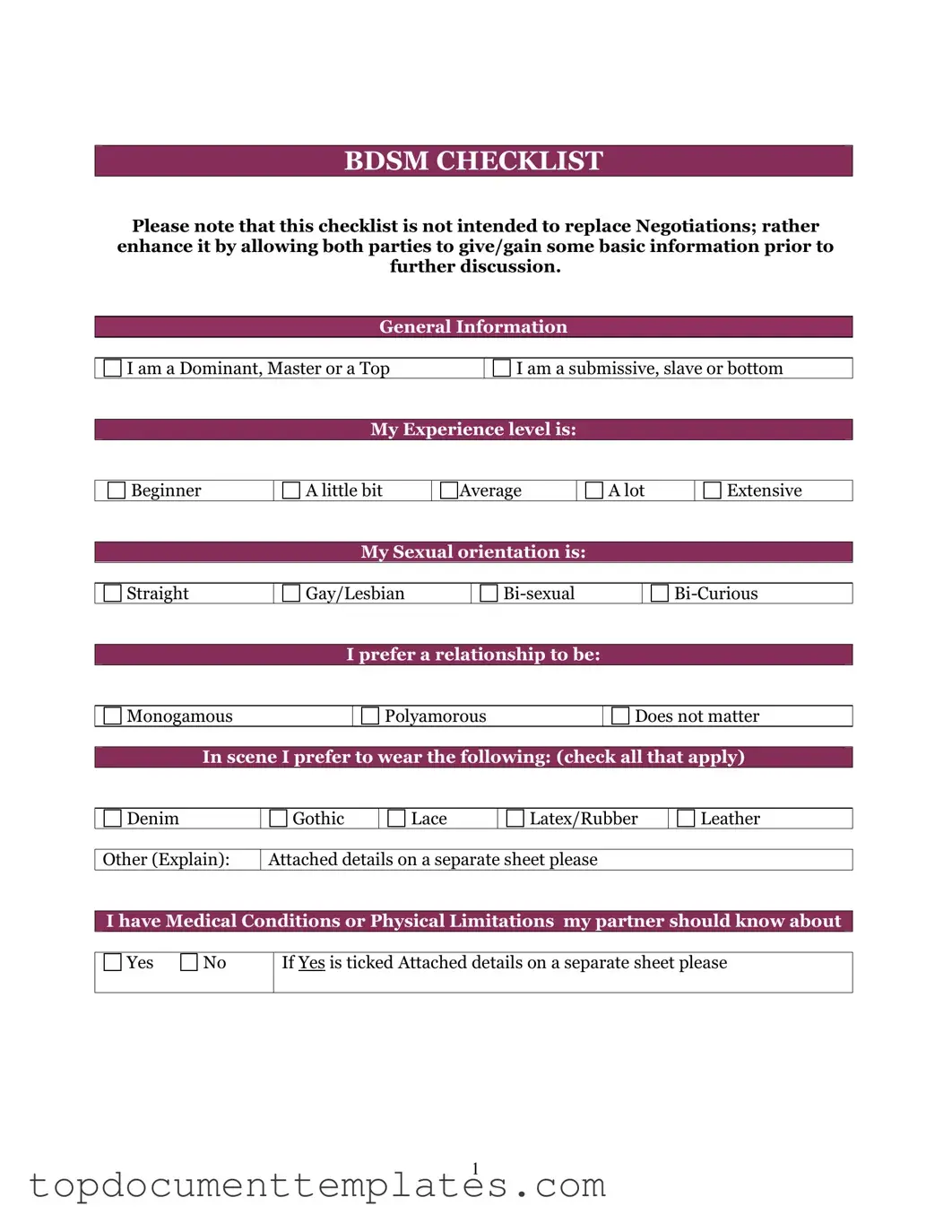The BDSM Checklist form serves as a vital tool for individuals engaged in BDSM practices, allowing them to communicate preferences, boundaries, and desires with their partners. This form typically covers a wide range of activities, from bondage and discipline to various forms of dominance and submission. Participants can indicate their interests in specific practices, ensuring that all parties involved have a clear understanding of what is acceptable and enjoyable. Additionally, the checklist addresses safety concerns, emphasizing the importance of consent and negotiation in every encounter. By facilitating open discussions about limits and safe words, the form promotes a respectful and consensual environment. It also encourages users to reflect on their own desires and boundaries, fostering a deeper connection between partners. The comprehensive nature of the checklist helps to eliminate misunderstandings and enhances the overall experience, making it an essential resource for both newcomers and seasoned practitioners alike.
